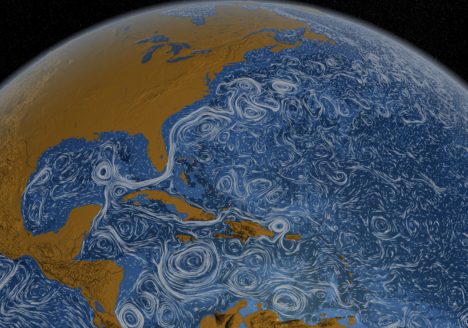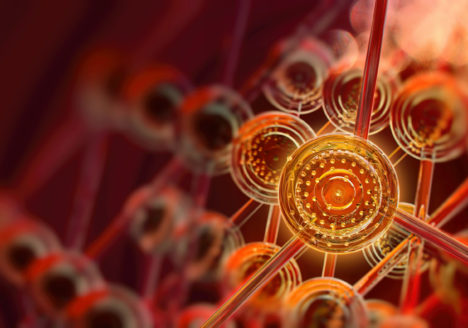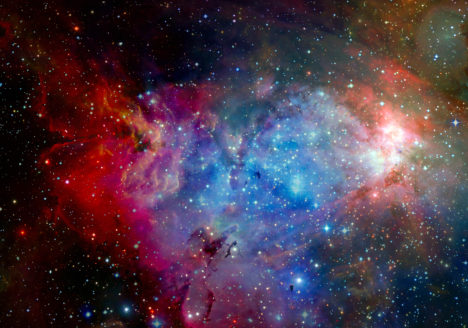Fighting super-spreading
NBI researchers look for the universal mechanisms which govern the processes of life. As the COVID-19 pandemic hit, their work was applied in the national mitigation strategy.
Just three months in early 2020 was all it took for the COVID-19 virus to invade practically all countries in the world. The pandemic gave us all a first-hand demonstration of a phenomenon which most people only knew from math class: the power of exponential growth.
Thinking abstractly about the origins of the pandemic, the replicative success of the COVID-19 virus illustrates how a phenomenon on the nano length-scale – tiny alterations to the surface structure of a certain protein in the virus – can have vast consequences on a global scale.
Such a span in length scales from nano to global scale is difficult if not impossible to handle in traditional medical research. Epidemiological studies will address the population scale, clinical studies will look at the patient scale, and a combination of lab experiments and theoretical work may elucidate what goes on at the atomic level. But none of these can provide the full picture. This is where physicists and their silicon replicas of the involved life processes come to the rescue.
“The pandemic gave us all a first-hand demonstration of a phenomenon which most people only knew from math class: the power of exponential growth.”
Part of the national mitigation strategy
Long before COVID-19 hit, biophysicists at NBI became engaged in developing digital models of fundamental life processes – including how certain diseases may disturb these processes. Building on methods from physics, the researchers look for the universal mechanisms which govern the processes of life.
Early on, these proposed mechanisms will be discussed with clinical doctors, biologists, epidemiologists and others. Why? Well, a model will most often propose a given condition – such as an illness – to cause a certain physical response in the body. However, in the complex world of biology this is seldom a one-way street. Often will the physical response in question trigger some kind of feedback which will influence the effect of the illness and possibly other bodily functions. This complexity can only be addressed through the involvement of domain experts, and these discussions will typically lead to modifications of the models.
So experienced is the group at NBI in this type of work, that the Danish health authorities (Statens Serum Institut) invited them to join the national COVID-19 pandemic mitigation efforts. Thus, the work at NBI around so-called super-spreaders soon became an integral part of the national COVID-19 management strategy. Acknowledging that different individuals have different capacity for transmitting the virus introduces an additional level of complexity. A model developed at NBI takes this phenomenon into account and is thus a valuable tool for instance in a situation where either introducing or phasing out lockdowns is considered.
Ready for future pandemics
Much like other digital worlds created at NBI, some of the models developed by the life physics researchers require significant computing resources, and applications for time at supercomputers are sent on a regular basis. Still, this is not always the case: the program which calculates super-spreading risks in a Danish context can be run at an ordinary laptop with a calculation time of just a few hours.
Thanks to a combination of lockdowns, massive testing and vaccinations, Denmark has managed to cope relatively well with the COVID-19 pandemic in comparison with many other countries. However, the virus is still around and not least the emergence of new variants warrants continuous attention and further modifications to the developed models.
Furthermore, we have to recognize that COVID-19 will surely not be the last pandemic that we see. There will be a next one, and another one. Each time, fast development and adaptation of an accurate digital model will be instrumental in addressing the situation, saving lives and mitigating societal costs.
For more information click the button below.
Other Digital Worlds developed at NBI
I FEEL I CAN BRING SOMETHING TO THE TABLE
Age matters little as the NBI researchers create digital versions of the physical world. Often it will be the students who are able to teach their experienced professors a trick or two.
Academia has always had a tradition for open exchange of ideas, including between faculty and students. In a field where being born digital is a definite plus it can sometimes even be hard to tell who is teaching whom.
“One thing I did bring to the table was a new approach to testing various hypotheses against each other,” says Dion Häfner, PhD student in the ocean dynamics group at NBI.
The group creates digital twins of oceans (as explained in the Digital Oceans chapter), mimicking currents and other processes of the real oceans.
“Creating these digital twins is really challenging and interesting. However, what interests me even more is how we can put these models into work once we have them,” says Dion Häfner.
The computer does the boring work
Digital versions of the ocean can be utilized to obtain new knowledge by manipulating certain factors. What will for instance happen if the temperature increases or if a given current is weakened?
“The thing is, when we do this type of experiments and observe some results, different people will have different stories on what is going on in our complex climate system. Previously, people would just agree to disagree, but I don’t think we should settle for that. That’s why I am developing machine learning-based tools to test different hypotheses against each other in a principled, quantitative manner. This was a new approach to the group,” explains Dion Häfner.

Asked what attracted him to the field, he replies:
“Right from the outset I liked the idea that I am able to leave a lot of the boring work to the computer. Just pushing a button and waiting for results to come in is really satisfying. Meanwhile, I can focus on what I find interesting.”
A deep connection with nature
“Running an ocean model can almost feel like playing a computer game,” Dion says with a smile, then adding on a serious note:
“But of course, this is not a game. What we create in our computers reflects what takes place in the outside world every day. As humankind we are only able to spend a limited time on this planet. If we want to expand that time, we really need to understand the world around us.”
Sounds like you are motivated by mitigating climate change?
“In part, yes. Climate change is the most urgent challenge to us right now, but I am not only focused on that. Other changes in the Earth’s climate will come after this one, and we need to understand our planet to handle them. Actually, I would say that the study of nature itself is my main motivation. Also, I am really fascinated by the technical details behind being able to build something as complex as our world inside a computer.”
The computer is not the only way for Dion to study nature, he adds:
“I feel a deep connection with nature – as most natural scientists do. Ironically though, considering that technically I am an oceanographer, I am not much of a boat person. I would probably just get sea-sick.”
“As humankind we are only able to spend a limited time on this planet. If we want to expand that time, we really need to understand the world around us.”
Dion Häfner, PhD student in TeamOcean at NBI.




